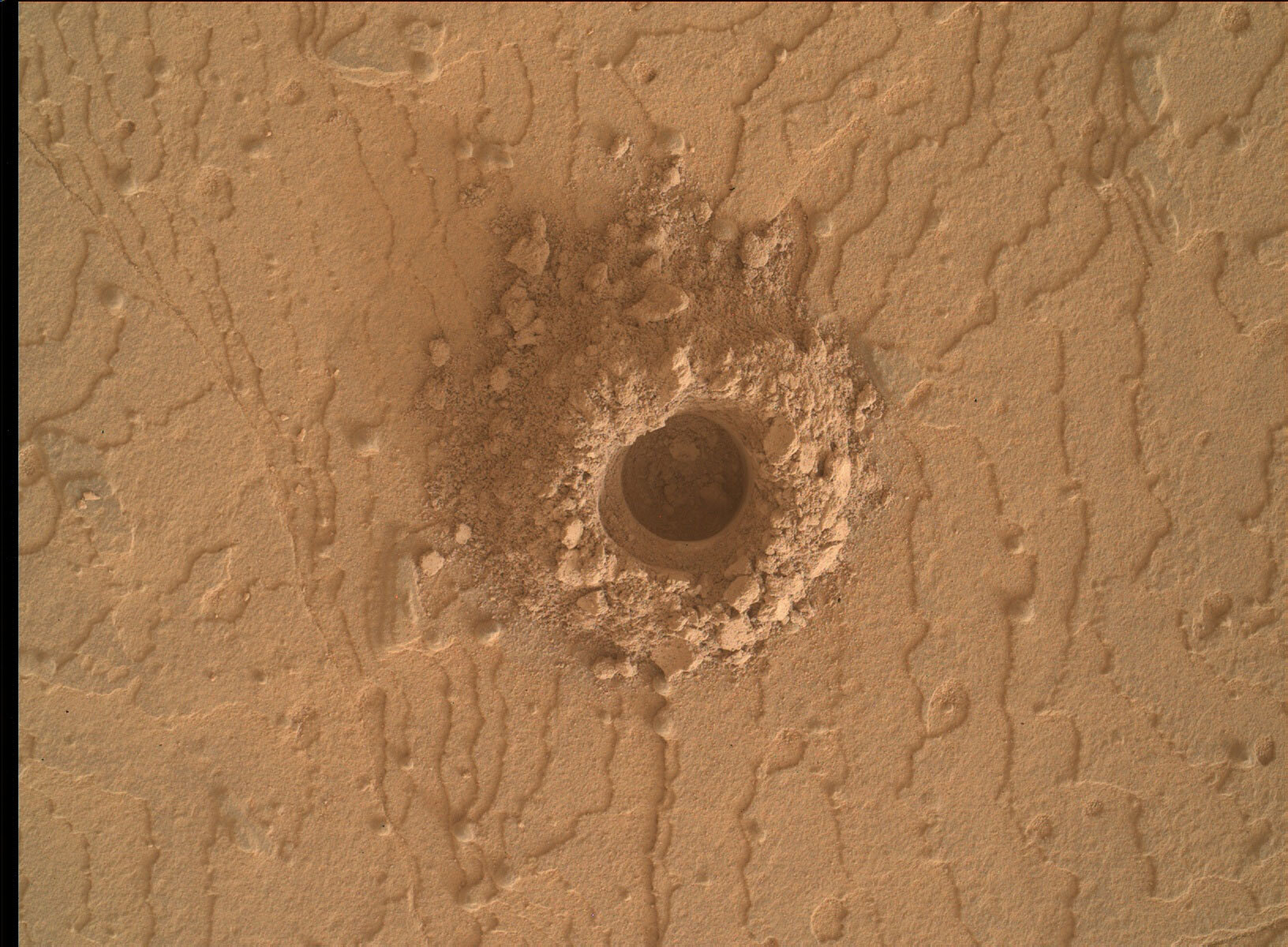2 min read

Curiosity is focused on wrapping up the drill campaign at the Canaima site before hitting the road again.
Curiosity started out with an unexpected 10% surplus in energy known as a “power gift.” This two-sol plan will allow Curiosity to complete the Canaima drilling activities before driving away along the Mount Sharp Ascent Route (MSAR). One planned activity is to analyze the Canaima drill tailings, the pile of material that was excavated by the drill hole. ChemCam will analyze the drill tailings to compare the chemistry between the drill tailings and the drill hole. ChemCam will target the range of material that is visible in the tailings pile from the smooth, finer-grained material to the larger clods. MAHLI will image the drill cuttings for context with a single 5cm standoff image. APXS and MAHLI will team up on the target “Bacabal,” located on the same rock as the Canaima drill site, to provide more information and context on the bedrock. Mastcam will acquire stereo imaging of two new targets, “Pedra” (an unusual shiny float rock) and “Taxi” (cyclically bounded laminations in the rock near Canaima), in addition to taking images of the rover wheel tracks to look for changes relative to previously acquired images. ChemCam plans to use its long distance remote micro imager to re-image a nearby hill that contains a distinct marker band, and the rover will continue its usual environmental monitoring.
Written by Sharon Wilson, Planetary Geologist at the Smithsonian National Air and Space Museum







